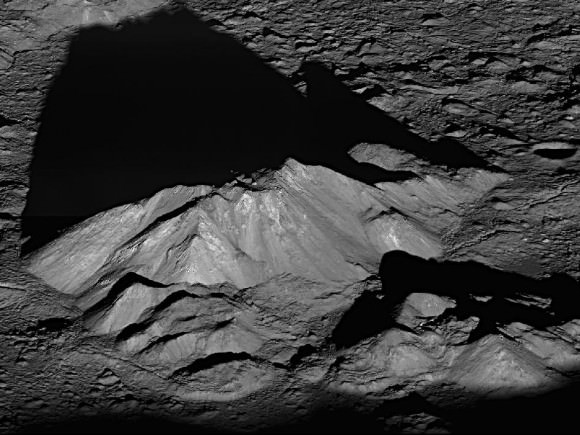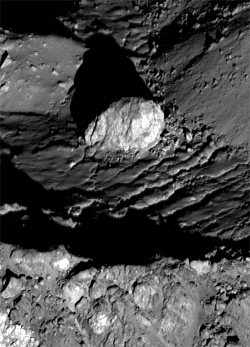
The central peak of Tycho crater may hold volcanic clues, according to a report from an Indian research team. (Image: NASA Goddard/Arizona State University)
A team of researchers at India’s Physical Research Laboratory (PRL) claims it has found evidence of relatively recent volcanic activity on the Moon, using data from NASA’s Lunar Reconnaissance Orbiter and the Chadrayaan-1 spacecraft. According to the findings the central peak of Tycho crater contains features that are volcanic in origin, indicating that the Moon was geologically active during the crater’s formation 110 million years ago.
In an article by the Deccan Herald, a Bangalore-based publication, the PRL researchers claim that vents, lava channels and solidified flows of inner crustal material found within Tycho were made as recently as 100 million years ago — after the creation of the crater.
This could indicate that there was pre-existing volcanic activity within the Moon at the site of the Tycho impact, lending credence to the idea that the Moon was recently geologically active.
In addition, large boulders ranging in size from 33 meters to hundreds of yards across have been spotted on Tycho’s central peaks by LRO, including one 400-foot (120-meter) -wide specimen nestled atop the highest summit. How did such large boulders get there and what are they made of?
The researchers hint that they may also be volcanic in origin.
“A surprise findings revealed the presence of large boulders–about 100 meter in size –on top of the peak. Nobody knew how did they reach the top,” said Prakash Chauhan, a PRL scientist.
Without further studies it’s difficult to determine the exact origin and ages of these lunar formations. The team awaits future research by Chandrayaan-II, which will examine the Moon from orbit as well as land a rover onto the lunar surface. Chandrayaan-II is expected to launch in early 2014.
The PRL team’s findings were published in the April 10 issue of Current Science.
Read the article in the Deccan Herald here.

A 400-foot-wide boulder within the central peak of Tycho. (NASA/GSFC/LROC)
Source: Universe Today
No hay comentarios:
Publicar un comentario